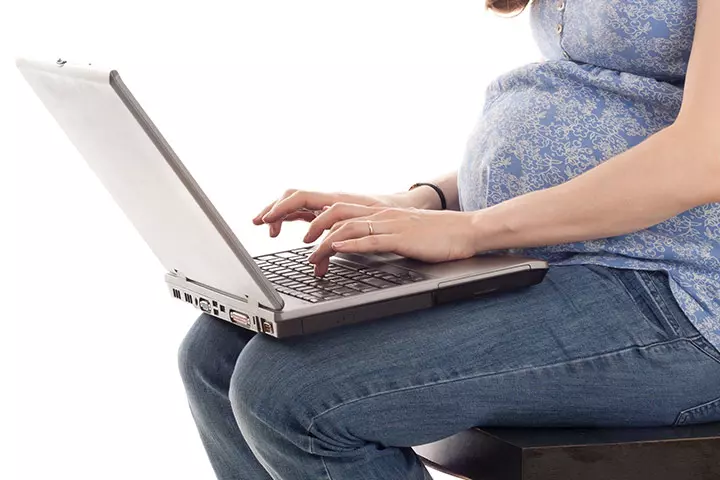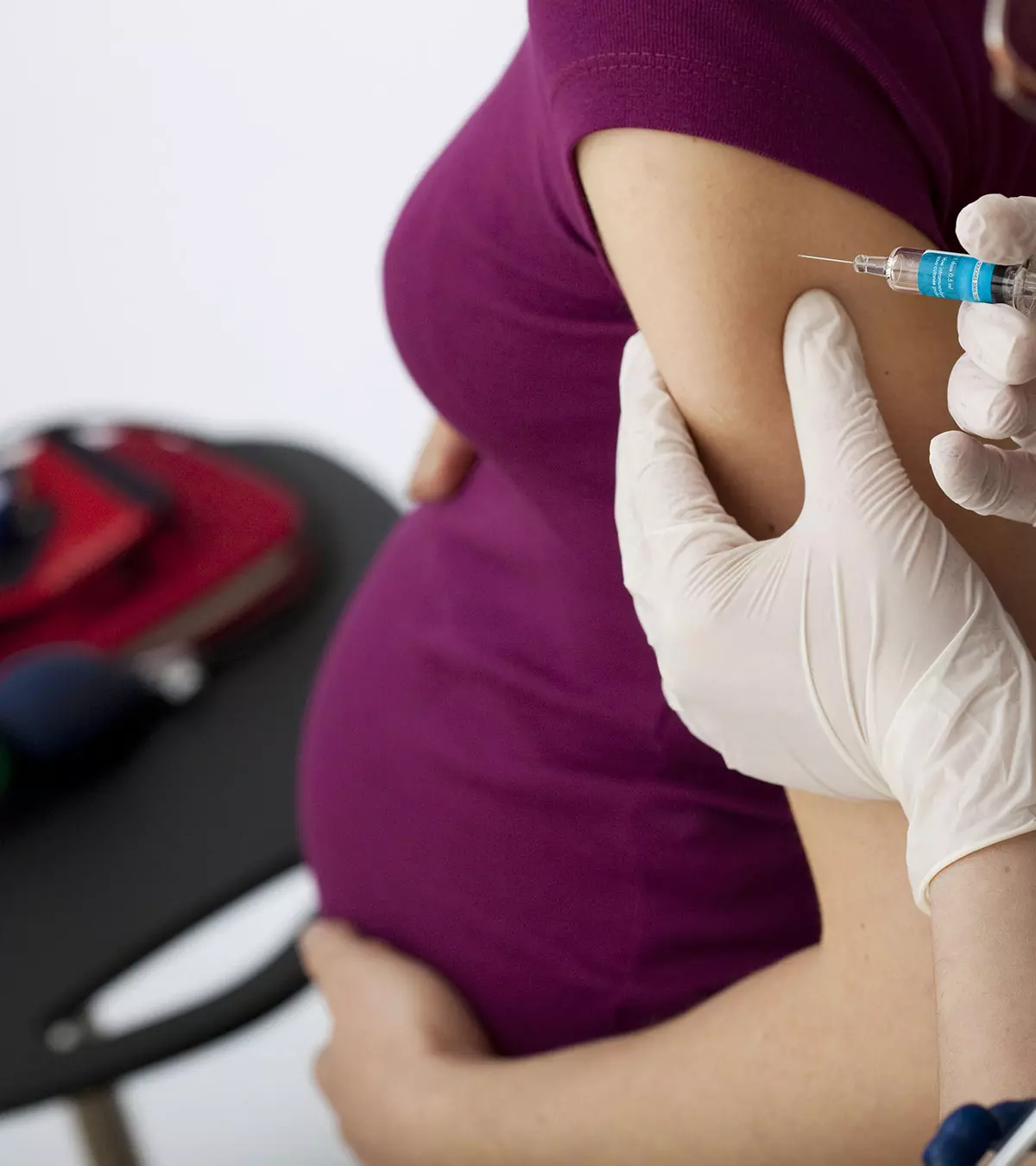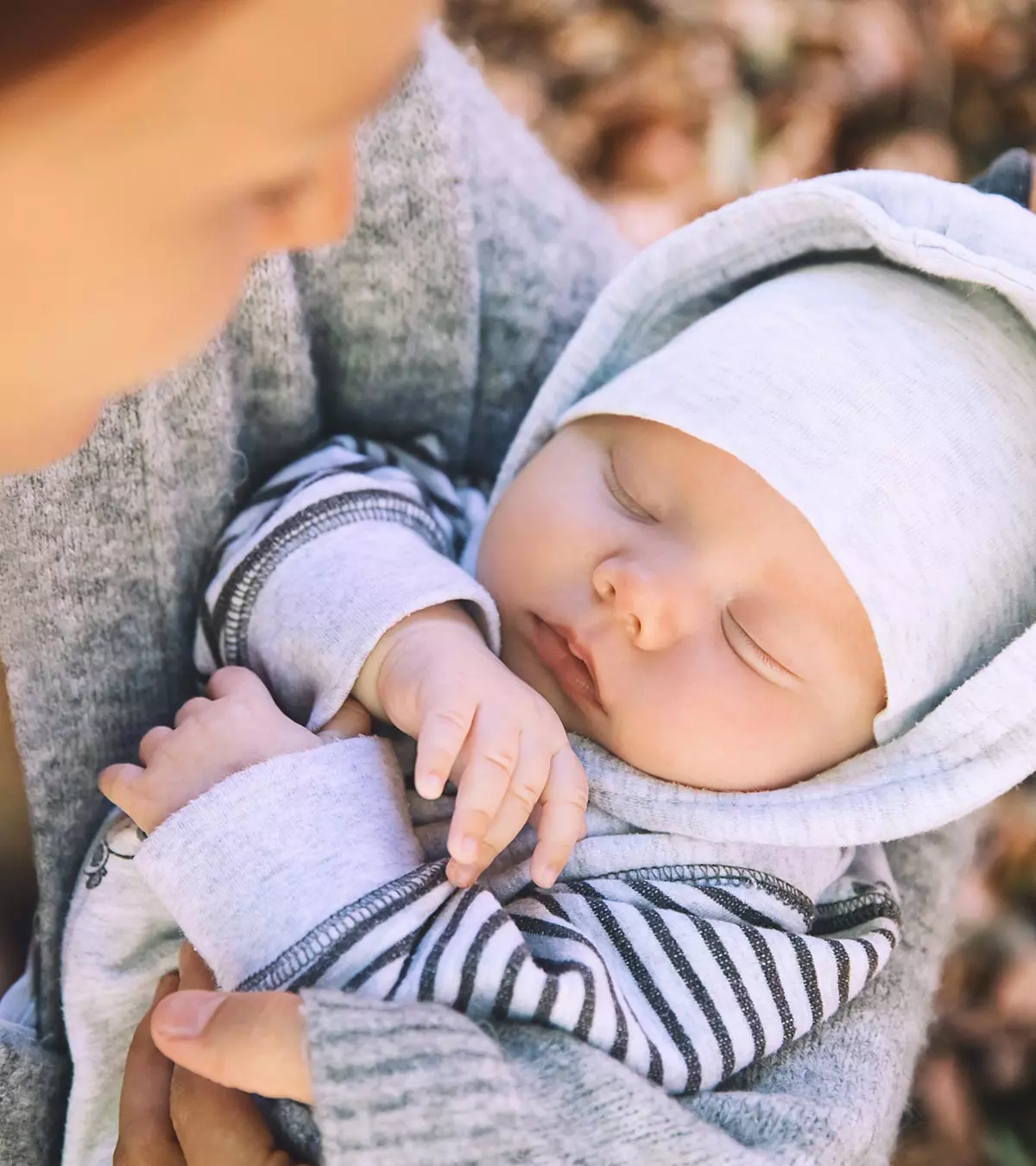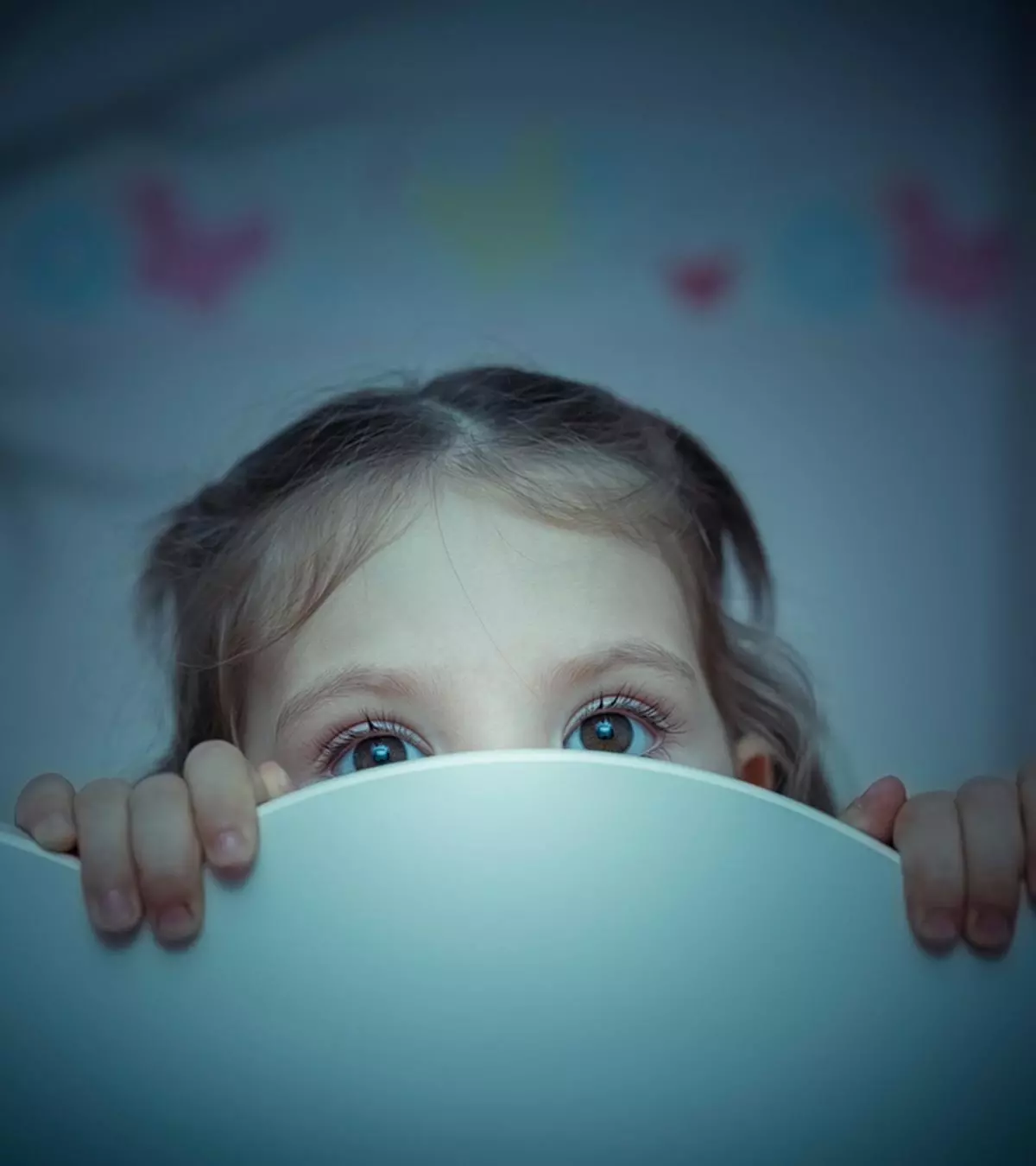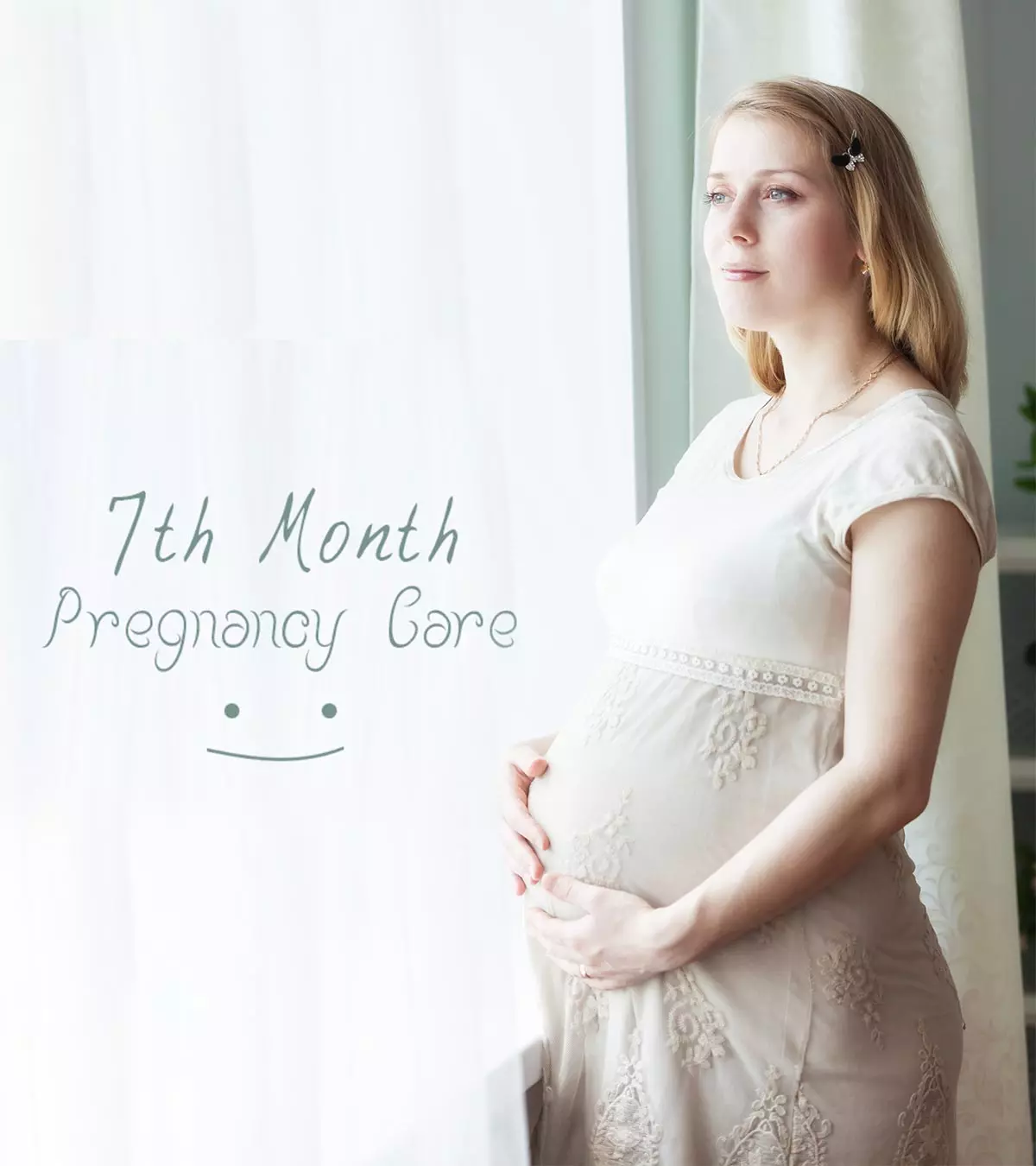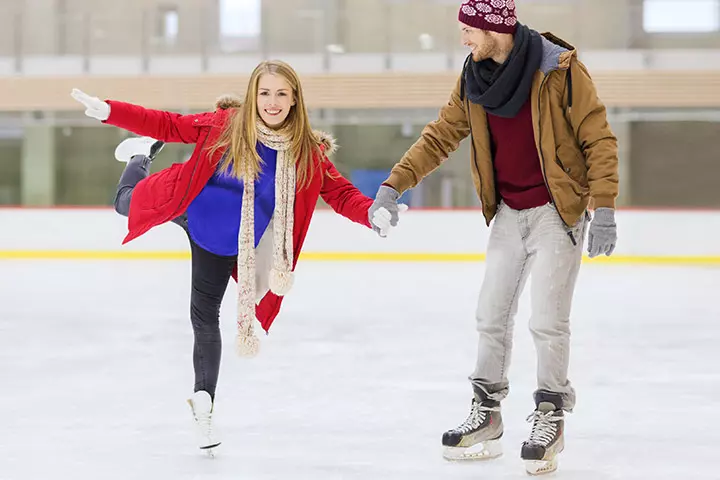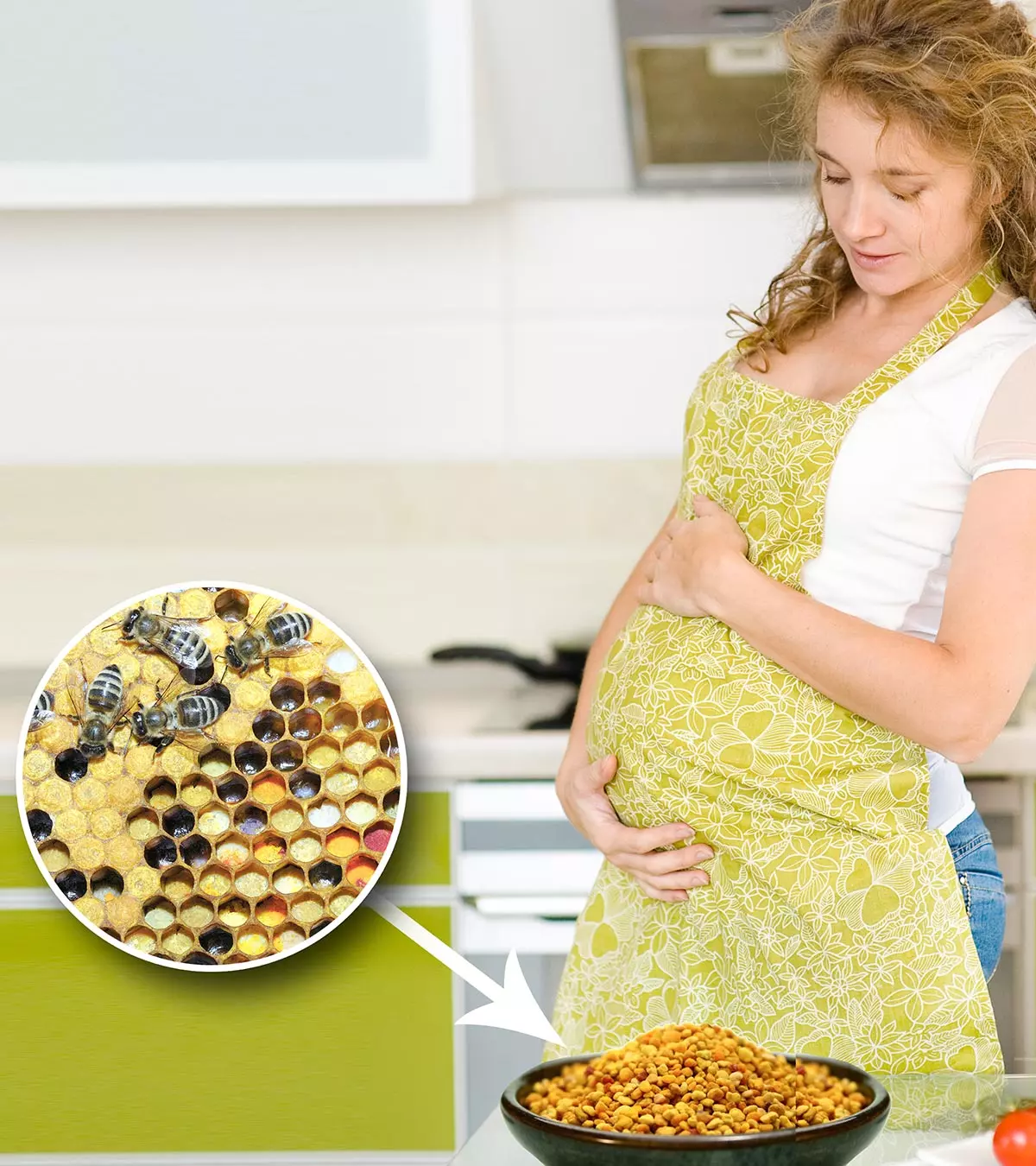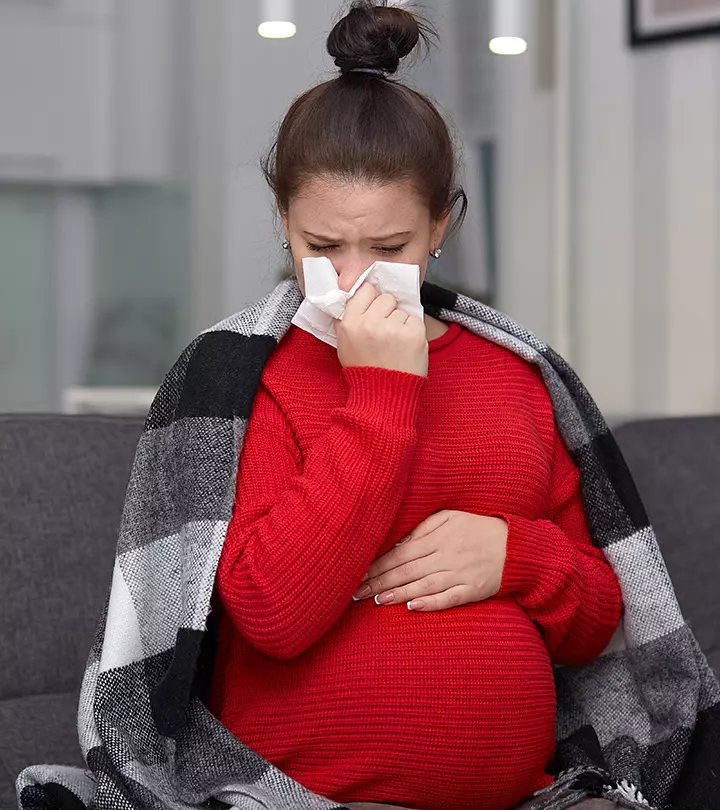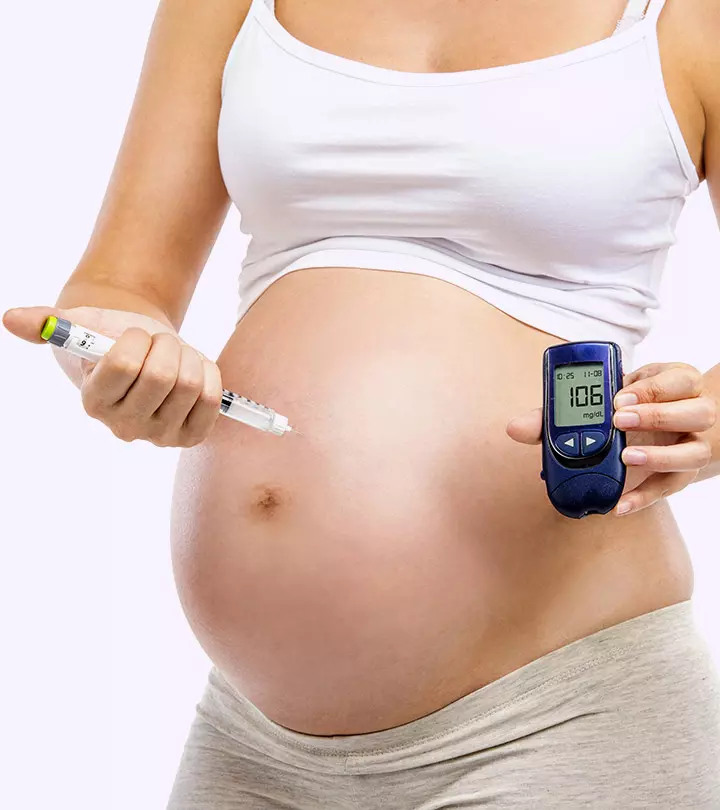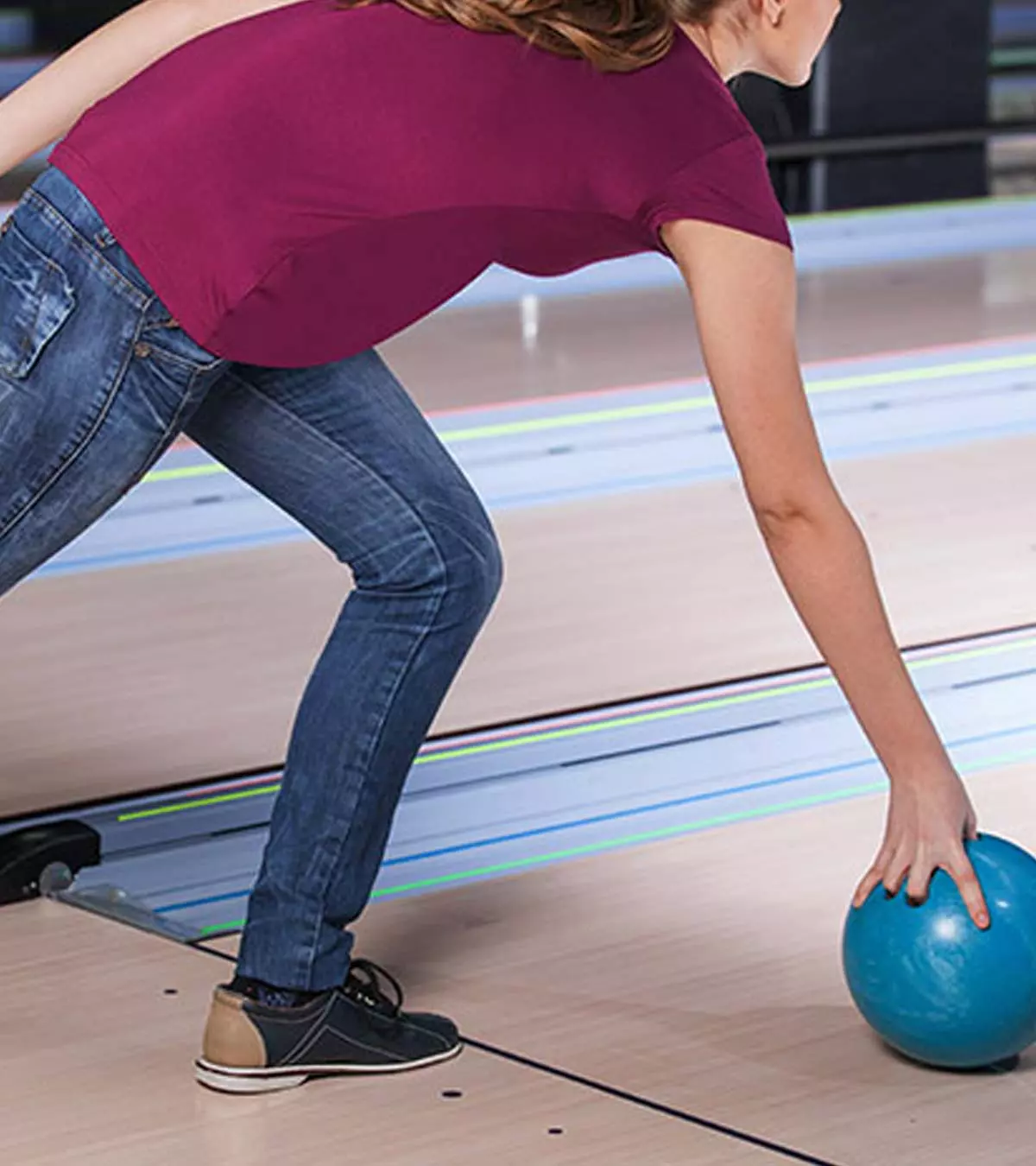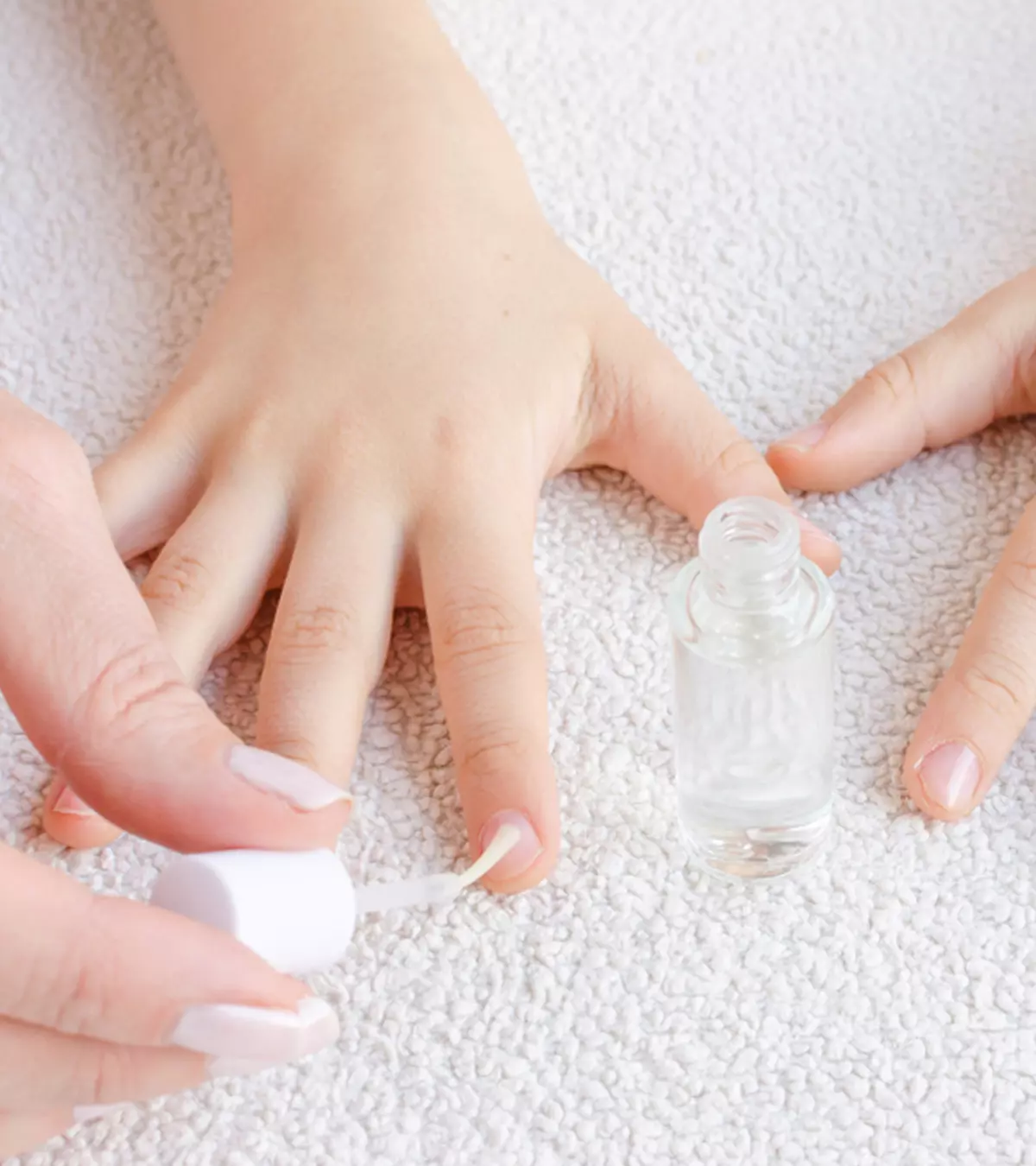
Image: ShutterStock
Applying nail polish to babies’ little toenails and fingernails is fun. Baby nail polish looks adorable, and many moms love to twin with their little ones on special occasions with matching nails. However, it’s important to learn about the right age to apply nail polish on baby’s nails, and tips for applying it safely. Furthermore, it is recommended to use non-toxic and safe nail polishes specially formulated for babies since most standard adult nail polishes and paints may contain chemicals that are harmful to babies. Read on to learn about the safety of baby nail polish, the right age to use nail polish, and the dos and don’ts.
Key Pointers
- Not all nail polishes are safe for babies since some ingredients can be harmful. You may use nail polishes specifically made for babies.
- You may avoid nail polish in younger children who often bite or suck their fingers, or until two to four years of age.
- You may apply non-toxic baby nail polishes on toenails since they cannot mouth it. However, it is not recommended for infants who suck their toes.
Is It Safe To Paint Baby’s Nails?
The safety of nail polish for babies depends on its ingredients. Standard nail polish could contain ingredients, such as toluene, which are toxic and could cause a host of problems, including those affecting the nervous system (1). Some other potentially harmful ingredients present include plasticizers, hardening agents, and solvents.
Babies tend to put their hands in their mouth, increasing the risk of accidental ingestion of nail polish and its harmful chemicals. Some nail polish chemicals, such as formaldehyde, may even cause allergies in children, such as contact dermatitis (2). Therefore, nail polish meant for adults is potentially unsafe for the baby.
 Experts say
Experts sayIf you wish to use nail polish, you may consider those specially made for babies. These nail polishes are non-toxic, have a mild odor, free from harsh chemicals, and have a water-based composition. They are also usually free from potential allergens, such as gluten, soy, and animal-sourced by-products.
When Can You Paint Your Baby’s Fingernails?

You may paint the baby’s fingernails after they have stopped the habit of sucking at their thumbs and fingers. It reduces the risk of accidental ingestion of nail polish. Thumb and finger sucking usually stops in toddlerhood —between the ages of two and four years (3). Also, toddlers between these ages are likely to understand instructions better, and, thus, can understand that nail polish is for external use only. So, it is recommended to avoid baby manicures and pedicures until after your baby crosses the two-year mark.
When Can You Paint Your Baby’s Toenails?
Since toenails are harder to reach, some babies may not suck at them at all. Babies who suck at toenails may stop doing so by the age of 12 months, which is when they begin walking with support (cruising) (4). Keep a watch on your baby to see when they stop sucking their toenails. Once they do, you may apply nail polish on their toenails. Always choose non-toxic, water-based toenail polish that is easy to remove, and guide your child to let it dry completely before moving or playing to prevent smudging or peeling.
 Experts say
Experts sayNail Polish Chemicals That Might Be Toxic For Your Baby
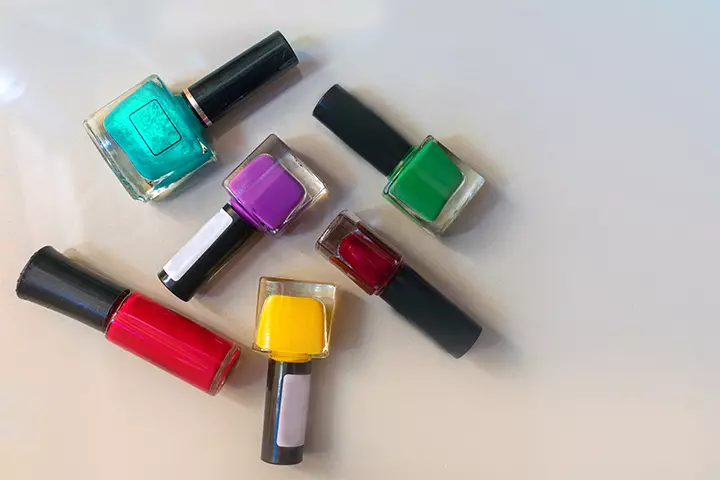
A nail polish meant for adults could contain several toxic compounds. The following are some of the notable potentially harmful chemicals often present in standard nail polish.
- Toluene: It is the most commonly used solvent and stabilizer in nail polishes. According to the Centers for Disease Control and Prevention (CDC), long-term exposure to toluene may cause respiratory problems, nervous system disorders, and developmental issues (1). Exposure to even minute amounts of the compound may induce headache and dizziness.
- Dibutyl phthalate (DBP): DBP is an odorless emulsifying agent that ensures the flowing consistency of the nail polish. It is considered carcinogenic, and prolonged exposure to this chemical may increase the risk of liver and kidney disorders (5). It has also been linked to reproductive issues. The chemical is banned in several countries.
- Formaldehyde: It is often added to nail polish to aid its hardening. Formaldehyde also prevents the flaking of dried nail polish. This chemical is considered carcinogenic (nasal and lung cancers) and is an irritant to the eye and respiratory tract. It may also lead to skin irritation (6).
- Camphor: It provides the nail polish a glossy look for a long time. The compound is considered a neurological toxin. The ingestion of even small quantities of the compound could increase the risk of disorientation and seizures among babies (7).
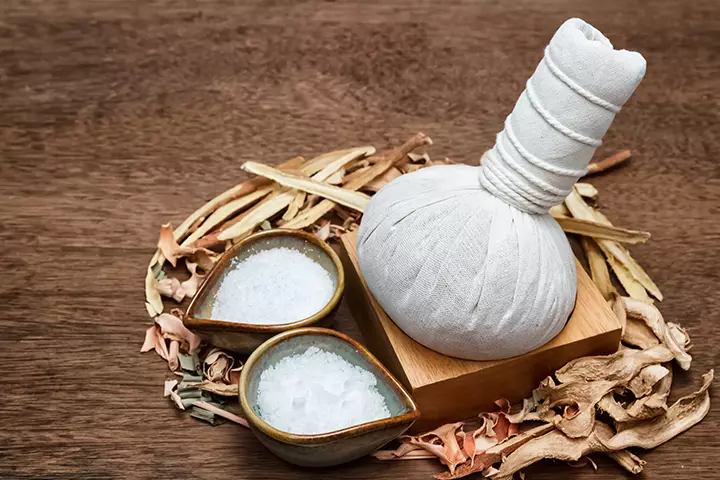
- Triphenyl phosphate (TPHP): It is added to nail polish as a plasticizer, which is a compound that keeps the nail polish thick yet flowy (8). The compound could increase the risk of skin allergy on skin contact. Also, accidental ingestion may affect the liver, kidneys, and nervous system (9).
- Phthalates: These are added as plasticizers to nail polishes (10). The compound could cause skin irritation and may adversely affect various organs, such as the liver, kidneys, and lungs (11).
 Point to consider
Point to considerNail polish meant for babies is free from these compounds and thus safe. Nevertheless, check for the ingredients on the nail polish bottle. You may even contact the manufacturer of nail polish for babies to know more about the product’s specific ingredients.
Dos And Don’ts While Painting Your Baby’s Nails
Here are a few things to keep in mind if you have decided to paint your baby’s nails.
Dos
- When buying nail polish, check for certifications, and choose products from reputable brands.
- Keep the baby still to avoid accidental rubbing of paint on their bodies.
- Avoid accidentally dripping the nail polish on the baby’s clothes to minimize skin contact.
- Apply nail polish in a well-ventilated room so that the nail polish fumes and fragrance does not persist for too long.
- Try choosing light or transparent colors as they might not tempt your babies to suck their fingers.

Don’ts
- Do not keep the nail polishes within the baby’s reach.
- Let the nail polish or acrylic paint dry before you leave the baby.
- Do not let the paint come in contact with the skin around the nails, cuticle, and the fingers.
- Repeated application of even non-toxic nail polish could damage a baby’s delicate nails. Hence, do not apply nail polish frequently.
 Quick tip
Quick tipHow To Paint A Baby’s Nails?

Here are some tips to follow to have a smooth and safe nail painting experience with your baby.
- Place the baby on a high chair before application. It will allow easier access to the fingernails and toenails.
- Choose a well-ventilated room to allow proper airflow and reduce your baby’s exposure to nail polish fumes.
- Place a toy in front of the baby or talk to them while applying nail polish.
- Apply the basecoat and topcoat using a brush, focusing on one hand at a time. If you wish to add some sparkle, you may consider using nail polish with shimmer and glitter. For a creative touch, go for seasonal colors or matching mom-and-baby sets.
- Hold the hand while the nail polish dries to prevent accidental ingestion. Older toddlers could also be taught not to ingest the nail polish.
- If your baby often attempts to put their fingers in their mouth after applying the nail polish, you may consider painting the nails while they are asleep.
- Do a patch test before applying nail polish. Watch for any signs of an allergic reaction and seek medical help if needed.
Frequently Asked Questions
1. Why doesn’t nail polish stay on my baby’s nails?
The water-based nail polish meant for babies tends to chip-off sooner than standard nail polish meant for adults. Also, children tend to be active with no regard for their painted nails. Thus, the paint may not stay for long and fall off soon.
2. Can babies go to nail salons?
You can take your baby to salons that specialize in painting a baby’s nails. Salons meant for grown-ups tend to have nail polishes and other products that are unsuitable for babies and toddlers.
3. Can newborns smell nail polish?
Newborns have a strong sense of smell, so they may be able to smell the nail polish. However, it is advisable to keep them away from these odors (12).
4. What can I use to record my baby’s fingerprints at home?
You can use non-toxic and washable colors or a thick paste made from edible ingredients such as turmeric to record your baby’s fingerprints at home.
5. What are some non-toxic alternatives to traditional nail polish?
Water-based nail paints, and nail polishes with plant-based ingredients or natural colors are a safer choice for babies, as they usually don’t contain harsh chemicals. However, the application, duration, storage, and removal of these products can vary by brand (14). Always check the ingredients for anything that might irritate the skin or cause allergies, like synthetic dyes or fragrances. Since babies have sensitive skin, it’s a good idea to talk to a healthcare professional before using these products to ensure they are safe.
6. How do I remove nail polish safely from my baby’s nails?
Regular nail polish removers often contain chemicals like acetone, which can cause side effects in babies, such as vomiting, dizziness, low blood pressure, and irregular heart rate. To avoid these risks, it is best to use safe, non-toxic, non-acetone-based removers for your baby’s nails (15).
The thought of seeing tiny baby nails painted in different colors may excite you. However, you should be mindful while choosing a baby nail polish and pick a product free from harmful chemicals. Several baby-friendly nail polishes are available in the market today. Several brands also claim that their products are free from chemicals and have labels such as three-free, five-free, or seven-free. However, select a nail polish after thoroughly researching the ingredients to ensure they are safe for your little one.
Infographic: Is There Such A Thing As Edible Nail Polish?
If you want to style your baby without exposing them to harsh chemicals, you may want to consider the one-of-a-kind edible nail polish. Learn about this interesting edible nail paint from the US and find out how it is perfect for your little diva. Illustration: Momjunction Design Team
Illustration: Baby Nail Polish: Is It Safe Right Age And Tips

Image: Stable Diffusion/MomJunction Design Team
Nail polish for kids may seem unsafe to parents as it may be ingested by mistake. But parents there’s no need to worry as we bring you the procedure to make kid-friendly edible nail polish!
References
1. ToxFAQsTM for Toluene; Agency for Toxic Substances and Disease Registry
2. A look at the effects of nail polish on nail health and safety; Harvard Medical School
3. Cameron Blair, Finger Sucking in Children; John Hopkins Medicine
4. Important Milestones: Your Child By One Year; Centers for Disease Control and Prevention
5. Dibutyl phthalate; National Library of Medicine
6. Formaldehyde; American Cancer Society
7. Samrendra Narayan and Nishith Singh, Camphor poisoning—An unusual cause of seizure; National Center for Biotechnology Information
8. Emma Mendelsohn et al., Nail Polish as a Source of Exposure to Triphenyl Phosphate; National Center for Biotechnology Information
9. Triphenyl phosphate; New Jersey Department of Health and Senior Services
10. Nail Care Products; U.S. Food & Drug Administration
11. Priority chemicals of concern reference; Health Care Without Harm
12. Newborn-Senses; Children’s Hospital of Philadelphia
13. How Toxic Is Nail Polish (and What to Use Instead?); nontoxicrevolution.org
14. Raina Kasera et al., (2022) Non-Petroleum Based Alternatives for Nail Polish Formulation; University of California, Berkeley
15. Harleen Arora and Antonella Tosti; Safety and Efficacy of Nail Products; (2017); Cosmetics
Community Experiences
Join the conversation and become a part of our nurturing community! Share your stories, experiences, and insights to connect with fellow parents.
Read full bio of Dr. Pooja Parikh
Read full bio of Rohit Garoo
Read full bio of Dr. Ritika Shah
Read full bio of Ghazia Shah












